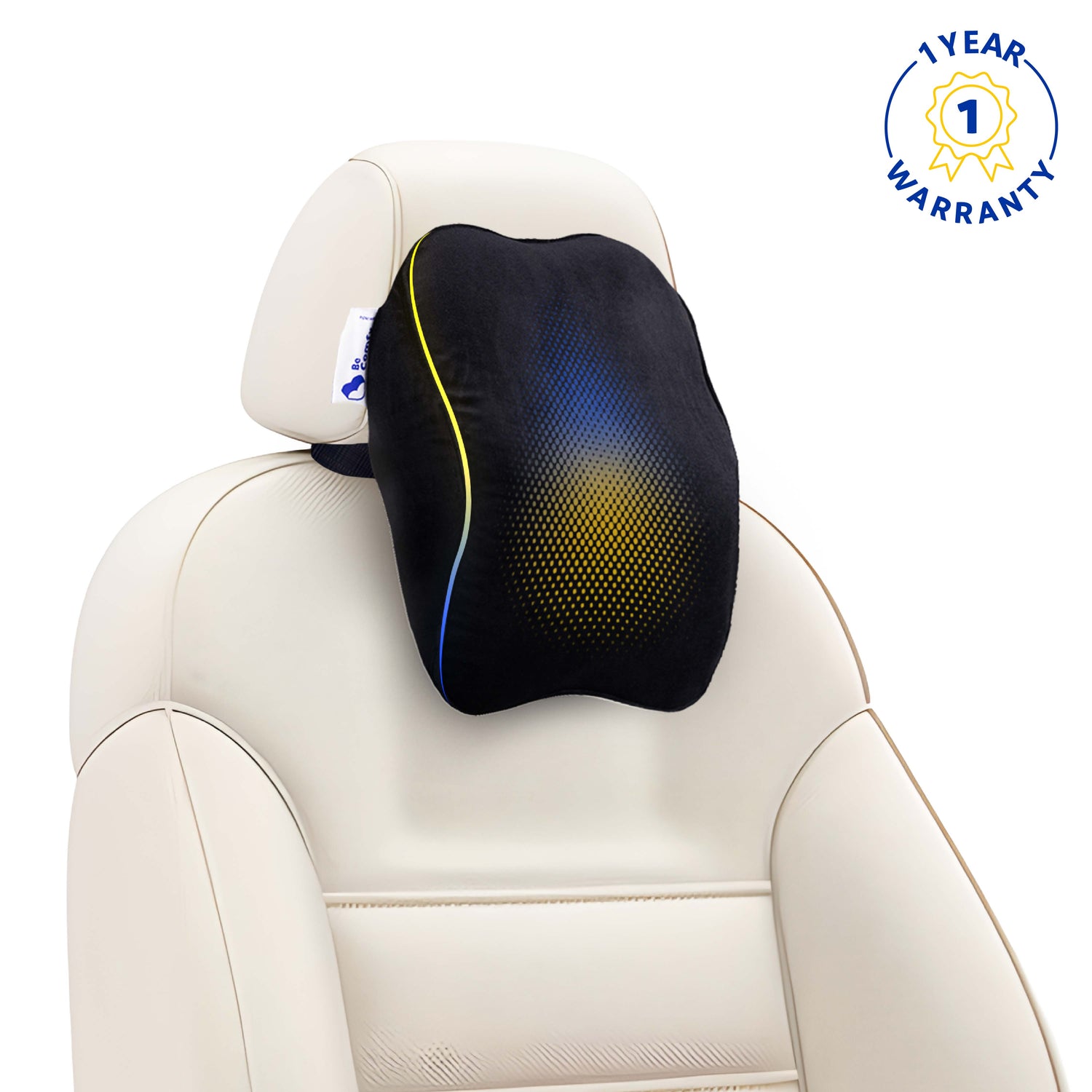WFH Setup Mistakes Costing Your Back: Simple Ergonomic Fixes You Can Make Today
Share
Working from home (WFH) has become the new normal for many across India. While the flexibility is great, our makeshift home offices – often the dining table, sofa, or even the bed – might be silently wreaking havoc on our backs. If you've noticed more aches and pains since shifting to remote work, you're not alone. Poor ergonomics in WFH setups is a major contributor to the rising rates of back pain, a problem already affecting over 65% of India's workforce due to sedentary habits.
Unlike dedicated office spaces, home environments often lack proper ergonomic furniture. That temporary setup might feel okay initially, but over time, common WFH mistakes can lead to significant discomfort, reduced productivity , and even long-term spinal issues. The good news? You don't need a complete office overhaul. Let's identify the most common WFH setup mistakes and explore simple, practical fixes you can implement today.
Mistake 1: Using the Wrong Chair (or Sofa, or Bed!)
Perhaps the biggest culprit is unsuitable seating. Dining chairs, stools, sofas, and beds lack the support and adjustability needed for prolonged work.
-
The Problem: These surfaces often force you into awkward postures, like slouching or hunching. They typically lack adequate lumbar support, causing your lower back's natural inward curve to flatten, straining muscles and spinal discs. Armrests might be non-existent or at the wrong height, leading to shoulder and neck tension.
- The Fix:
- Prioritize Lumbar Support: If buying an ergonomic chair isn't feasible, significantly improve your existing chair with a dedicated lumbar support cushion. The BeComfy Back Support for Chair, with its contoured memory foam, is designed precisely for this – adding crucial support to maintain your spine's natural curve, even on basic chairs. Its universal straps make it easy to attach to various seats.
- Adjust Height (If Possible): Aim for your feet to be flat on the floor, with knees level or slightly below your hips. If your chair is too high, use a footrest – even a stack of sturdy books or a small stool can work. If it's too low relative to your desk, consider adding a firm cushion to sit on.
- Avoid the Sofa/Bed: Reserve these for relaxation, not work. Their lack of support makes maintaining good posture nearly impossible for extended periods.
Mistake 2: Incorrect Desk or Table Height
Working at a surface that's too high or too low forces unnatural arm and shoulder positions.
-
The Problem: A desk that's too high makes you shrug your shoulders, leading to neck and shoulder strain. A desk that's too low causes you to hunch forward, straining your back and neck.
- The Fix:
- Aim for 90-Degree Elbows: Your elbows should be bent at roughly a 90-degree angle when typing, with forearms parallel to the floor.
- Adjust Your Chair First: Set your chair height correctly (feet flat, knees level/below hips) first.
- Modify the Desk (If Needed): If the desk is too high after adjusting your chair, raise your chair further and use a footrest. If the desk is too low, place sturdy blocks or books under the desk legs to raise it. Avoid lowering your chair to fit a low desk, as this compromises leg posture.
Mistake 3: Poor Monitor or Laptop Placement
Staring down at a laptop screen or having your monitor at the wrong height is a recipe for neck pain, often called "text neck".
-
The Problem: Constantly looking down or craning your neck strains the muscles and vertebrae in your neck and upper back.
- The Fix:
- Eye Level is Key: Position the top of your screen at or slightly below eye level. You should be able to look at the screen without tilting your head up or down significantly.
- Use a Laptop Stand: If working primarily on a laptop, use a stand or even a stack of books to elevate the screen to eye level.
- External Keyboard & Mouse: When using a laptop stand, you must use an external keyboard and mouse. This allows you to keep the screen at the right height while maintaining proper arm and wrist posture. Place them close to you to avoid reaching.
- Distance: Keep the screen about an arm's length away.
Mistake 4: Forgetting to Move
Even the perfect ergonomic setup can't compensate for staying glued to your seat all day.
-
The Problem: Prolonged static postures, regardless of how good they are, lead to muscle fatigue, stiffness, reduced blood flow, and increased spinal pressure.
- The Fix:
- Schedule Breaks: Set reminders to get up and move every 30-60 minutes. Walk around, stretch, get some water.
- Incorporate Movement: Take calls while standing or walking (if possible). Do simple stretches at your desk (neck rolls, shoulder shrugs, back extensions).
- Change Positions: If you have the option, alternate between sitting and standing.
Conclusion: Small Changes, Big Impact on Your Back
Creating an ergonomic WFH setup in India doesn't have to be complicated or expensive. By addressing common mistakes related to your chair, desk height, screen placement, and movement habits, you can make significant strides in preventing and relieving back pain.
Focus on achieving a neutral posture: feet flat, knees level, back supported (especially the lower back), elbows at 90 degrees, and screen at eye level. Simple fixes like using books as a footrest or laptop stand, and investing in a quality lumbar support cushion like the BeComfy Back Support , can transform an uncomfortable WFH space into one that supports your health and productivity. Take a few minutes today to assess your setup – your back will thank you for making these simple ergonomic fixes.

